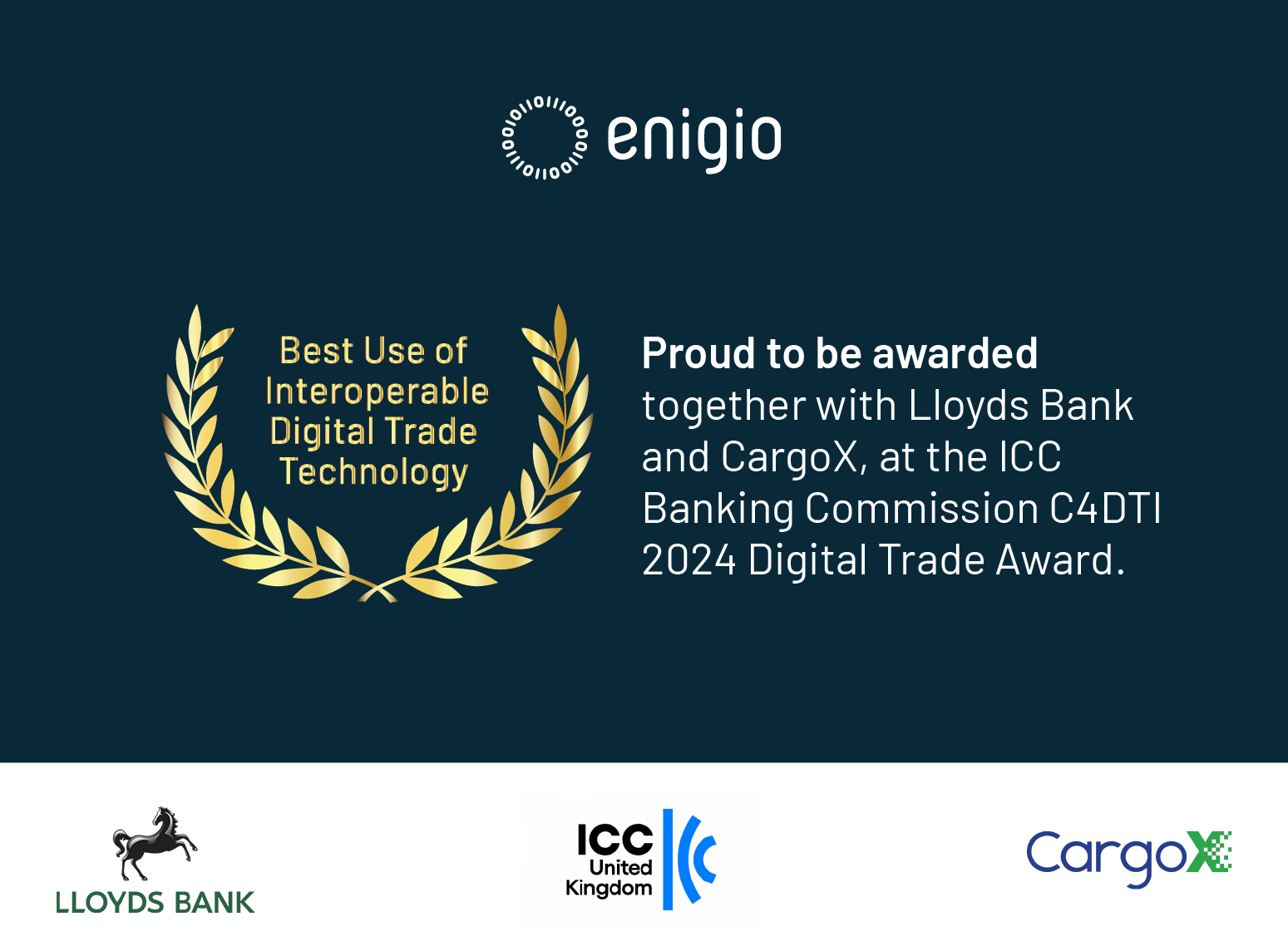
Enigio is particularly pleased with the recognition “Best Use of Interoperable Digital Trade Technology”, together with Lloyds Bank and CargoX, at the ICC Banking Commission C4DTI 2024 Digital Trade Award.
Enigio’s trace:original is a document-centred solution enabling an open eco system for trade parties without traditional barriers. The trace:original Electronic Trade Documents (ETD) are freely transferable to anyone anywhere, able to provide all levels of interoperability. Thereby enabling instant usability and value replacing paper documents, while also enabling a complete transformation to digital trade.
However, given the global and multiple parties nature of trade, interoperability with other technologies will become important as adoption and experience grow. Security and non-repudiation will be key factors and requirements for ETD interoperability. With the increasing adoption of MLETR globally it is important to consider how to implement such technology interoperability that beneficially serves and future proofs the industry’s paperless ambition.
There are no ready-made or implemented standards or defined interoperability frameworks existing in the context of MLETR (or UK ETDA) for ETD. Therefore, Enigio, CargoX and LBG got together to demonstrate the possibility and principles of such interoperability protocol, within the C4DTI context. The goal was to implement a reliable way to transfer ETD defined on one ETD technology (CargoX) and change it into a new form of ETD technology (Enigio´s trace:original) and back to the original (CargoX) again, maintaining and keeping a secure audit trail of the process without the risk of two originals existing at the same time. Ie. transferring an ETD between original technology mediums.
Even though interoperability is not explicitly mentioned in MLETR (or UK ETDA), MLETR clearly addresses the change of medium between documents, instruments and records. With MLETR clear guidance on “paper document to ETD “and “ETD to paper document”, it is therefore critical, for broader recognition and acknowledgement, that ETD interoperability is built and secures that any type of change of medium is generic and aligned with such MLETR guiding principles. That is, not specifically “paper document to ETD” but also “ETD (technology 1) to ETD (technology 2)”, or otherwise opportunities with MLETR adoption will fail to realise the full benefits.
Interoperability: Transfer of a singular original from one original medium technology to another original medium technology. A comparison could be moving an original from one physical paper document to another physical paper document without risking double spend and two authoritative originals existing at the same time.